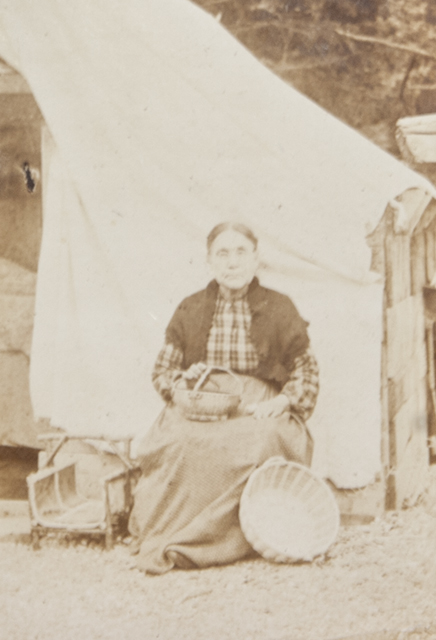First Nations – In Search of Indigenous Presence in the Region

Photograph
Indian Camps and Tents Site of Glendrissaig, about 1895
UQAR, Macnider fonds
Indigenous peoples are mostly absent from the region’s historical record. This is particularly true in Metis where the hundreds of articles written about the community barely mention their presence at all. First Nations are sometimes mentioned in reminiscences but very rarely seen in photographs.
Artisans from the Mi’kmaq community came with their families to Metis every summer bringing their baskets and other wares to sell to visitors. Mentions are scant and their identities are still mostly unknown. A lone photograph in one of the Macnider photograph albums identifies an Indigenous woman as “Annie St-Denis”. This could be the same woman who features in Alice Sharples Baldwin’s book as ‘Indian Annie’, the matriarch of the community with whom summer dwellers had occasional contact.
What was the settler community’s response to the presence of Indigenous peoples? Written accounts suggest that the welcome was not very generous. In 1899, a budding journalist wrote about his visit to Metis in The Varsity, the student newspaper of the University of Toronto. His article is full of the prejudices of the times and makes for uncomfortable reading today:
“They make baskets, bows and arrows, and – steal. The last is, of course, the most lucrative work they do, and they are very clever at it.”
Accounts from an earlier period highlight the importance of Indigenous guides in assisting clerics, scientists and travellers traverse the territory, their knowledge of the terrain and its geography essential for safe passage. Archeological digs may yet reveal more about the traditions of the peoples who were the first to make the region their home.

